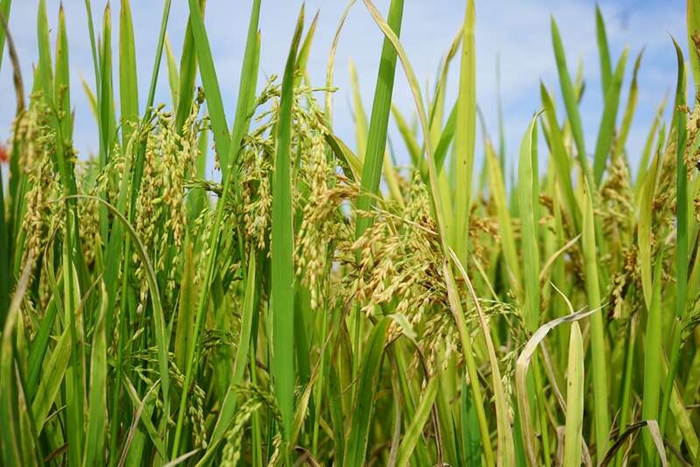[Xinhua] Chinese scientists decipher genetic mystery of clustered-spikelet rice

BEIJING, March 8 (Xinhua) -- Chinese scientists have deciphered the genetic basis behind the formation of clustered-spikelet rice, which has been an interest of agricultural science for nearly a century, providing a theoretical basis and a new path for cultivating high-yield rice varieties.
The study was conducted by a research team led by Tong Hongning, a researcher at the Institute of Crop Sciences of the Chinese Academy of Agricultural Sciences. It was published online in the academic journal Science on Friday.
Clustered-spikelet rice, a distinctive rice germplasm resource with the characteristic of producing multiple grains from a single position, has attracted the attention of agricultural scientists around the world since the 1930s, and extensive studies on it have been conducted.
However, the specific gene controlling the cluster formation of this type of rice had not been identified, and the genetic mechanism of its formation remained an unsolved mystery, according to Tong.
In order to search for the target gene, the research team conducted large-scale chemical mutagenesis on clustered-spikelet rice germplasm, creating about 10,000 clustered-spikelet rice muted lines, and studied their panicles one by one in the field.
After years of study, they finally discovered the mechanism of how the plant hormone, brassinosteroids (BRs), regulates the number of grains per panicle in rice.
"Our research unveils a groundbreaking role of BRs in regulating panicle branching and grain number through precise meristem transitions. Therefore, manipulating BR distribution could provide effective breeding strategies for finely tuning crop traits, ultimately boosting crop yield," Tong said.
Field experiments showed that the yield of the clustered-spikelet rice cultivated by regulating BRs can increase by 11.27 percent to 20.96 percent.
"Additionally, we found consistent alterations in BR content in pepper and rose with clustered growth patterns, suggesting a broader role of BRs in controlling this phenotype in nature," he said.
Understanding the mechanism behind clustered-spikelet rice occurrence could offer new insights into BR function and its role in controlling similar growth patterns in various species, he added.
Lin Hongxuan, an academician at the Chinese Academy of Sciences (CAS), said the research on clustered-spikelet rice has a long history, but the cloning of related regulatory genes is difficult and had not been successful. Tong's team has finally unraveled the mystery which is a significant breakthrough in rice research.
Li Jiayang, another CAS academician, said this study provides a highly promising molecular design strategy that can better help achieve high and stable crop production and ensure food security.
-
 Apr 18, 2024Opening Ceremony of the Training Workshop on Wheat Head Scab Resistance Breeding and Pest Control in Africa Held in CAAS
Apr 18, 2024Opening Ceremony of the Training Workshop on Wheat Head Scab Resistance Breeding and Pest Control in Africa Held in CAAS -
 Apr 03, 2024IPPCAAS Co-organized the Training Workshop on Management and Application of Biopesticides in Nepal
Apr 03, 2024IPPCAAS Co-organized the Training Workshop on Management and Application of Biopesticides in Nepal -
 Mar 28, 2024Delegation from the School of Agriculture and Food Science of University College Dublin, Ireland Visit to IAS, CAAS
Mar 28, 2024Delegation from the School of Agriculture and Food Science of University College Dublin, Ireland Visit to IAS, CAAS -
 Mar 25, 2024Director of World Food Prize Foundation visited GSCAAS
Mar 25, 2024Director of World Food Prize Foundation visited GSCAAS -
 Mar 20, 2024Institute of Crop Sciences (ICS) and Syngenta Group Global Seeds Advance Collaborative Research in the Seed Industry
Mar 20, 2024Institute of Crop Sciences (ICS) and Syngenta Group Global Seeds Advance Collaborative Research in the Seed Industry
